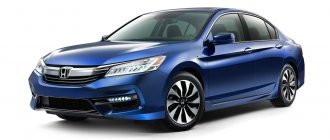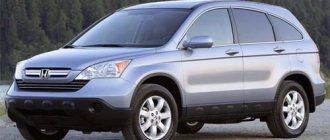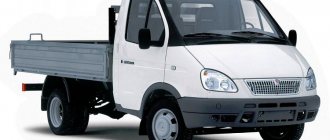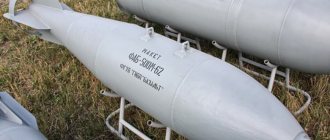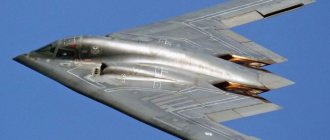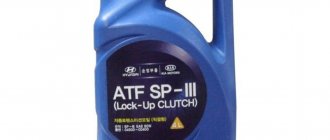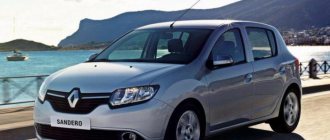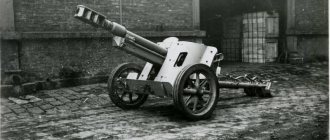K series engines
When the B engines no longer met modern environmental standards, the concern introduced new units - K20, K23, K24. These are 4-cylinder engines with timing chain drives. Unlike belt drives, chain drives on K engines have a huge service life - over 200 thousand km. The cylinder head is two-shaft (made according to the DOHC design), equipped with an i-VTEC phase distribution system, which was rarely used on B-series engines - only in late-production units. By the way, it was the use of the i-VTEC system that made it possible to significantly reduce the content of harmful substances in exhaust gases, which is why engines began to be installed on cars that were new at that time.
Also used on the Accord, the K20, K24 installations (with cylinder volumes of 2.0 l and 2.4 l) were performed without hydraulic compensators, which required adjusting the valve clearances every 40 thousand kilometers.
As for the performance characteristics of these engines, everything is excellent here. With a large volume and high power (155 hp), the internal combustion engines were distinguished by low fuel consumption - in the combined cycle, consumption was 7.4 liters per 100 km, and when driving on the highway it completely dropped to 6.4 liters. And although the K-series engines became popular and were installed in Honda Accords for a very long time (the K24W model is used in the new Accords in 2018), they were less reliable than their predecessors, the B-series engines.
In particular, owners face the following problems:
- Oil leaks. The specifications indicate that the possible lubricant consumption per 1000 km is 1 liter. The front crankshaft oil seal may also leak.
- Engine knocking is found specifically on the K20A, used on the 7th generation Accords from 2002 to 2008. The cause was wear of the exhaust camshaft; replacing it solved this problem.
- Vibrations caused by wear of one of the cushions. The cause may also be a stretched timing chain, but this is only relevant on old engines with a mileage of about 150 thousand kilometers.
- Overheating of the 4th cylinder - occurs on 2002 K20 engines. Since 2003, this deficiency has been eliminated.
The most modern K-series unit, the K24W, is in use today and is installed on the 9th generation Accord and the 5th generation CR-V models. This is a 2.4-liter power plant with a power of 180 hp. It consumes about 8 liters of AI-95 gasoline when driving on the highway, and more in the city. The engine itself, like all K engines, is a 4-cylinder in-line, equipped with two camshafts and an i-VTEC system. There are no serious design or technological flaws, but the problems described above are possible on running engines.
Honda Accord 7 review
In 2002, the seventh generation Honda Accord was introduced to the world. The car was positioned as a family car with a sporty bent. This car has become one of the most popular Japanese sedans in the vastness of our country. This is quite understandable, because the car is quite comfortable, unpretentious, pleasant to drive and quite economical. The best estimate is the consistently high price for used cars of this brand.
the Honda Accord VII of its popularity to its appearance: the bright exterior and sporty body features combined with the practicality and comfort of the interior of this family sedan, which allowed the Honda company to take high positions in the world ranking of cars in this class.
Initially, the car was produced in three versions: sedan, coupe and station wagon. For the Russian market, a four-door, five-seater sedan is more in demand. If we talk about the paintwork of the body, it is quite unstable, like all Japanese cars. Therefore, it requires special care and frequent touch-ups. Chrome body trim also needs to be handled with care, as it is also not durable.
Owners of the Honda Accord VII note some sagging of the bumpers during operation due to weak fastening.
The disadvantages of the exterior of the seventh Honda Accord model also include fogging of the headlights, failure of the xenon “heating” unit and cracking of the glass in the fog lights. Many owners solved the last problem by replacing halogen lights with “collective farm” xenon, thereby eliminating the large temperature difference between the external and internal environment of the fog lamp, which caused its plastic glass to burst.
The dimensions of the car are quite impressive: 4665x1760x1450 (mm). Wheelbase – 2670mm. The ground clearance is 150 mm, which often causes complaints from owners of such cars in Russia, since it limits cross-country ability on unimproved roads.
At the time of its release, the interior of the Accord VII could be said to be ahead of its time, so even today it looks quite modern, while remaining pleasant and comfortable. The ergonomics of the cabin are at a fairly high level. Every detail of the interior is thought out and fits exactly into the interior decor. The materials used for interior decoration are also of excellent quality.
The seats are comfortable, and visibility is satisfactory. The wish of many owners is that the car be a little wider.
The main source of noise in the cabin is the wheel arches. The plastic used to trim the dashboard is hard and loud, and the sound insulation itself is minimal, which is traditional for the Japanese manufacturer. Particularly unpleasant is the creaking caused by the glove compartment shock absorber, B-pillars or central air ducts.
All necessary buttons, as well as the glove compartment, are backlit.
The rear seats fold asymmetrically, and the folding mechanism is operated from the trunk (not always convenient). The luggage compartment has three options for opening: a button on the lid, a lever from the passenger compartment (it is possible to lock it with a key), a button on the key (remotely). The trunk volume is 460 liters and can be increased by folding rear seats.
As standard, the car is equipped with a vehicle stabilization system (VSA), six airbags, a climate control system and full power accessories. Electronics in a car usually work without failure. Among the problematic little things, we can note the frequent burnout of the backlighting of the buttons in the cabin, the failure of the headlight washer nozzles and some malfunctions of the CD player.
Honda Accord was equipped with three types of engines: gasoline with a volume of 2.0 liters. (K20) - 155hp, 2.4l. (K24) - 190hp and diesel 2.2l. (N22) - 140hp For our country, gasoline options are more common. Car enthusiasts rarely have complaints about the engine; the engines are durable and reliable. Problems sometimes arise with the tension roller of the drive belt of mounted units, there are problems with the crankshaft oil seal, as well as with the VTEC valve gasket, through which oil can leak. For cars over 100-120 thousand km. mileage, it is not uncommon to have problems with the power steering high pressure hose, as well as with the power steering pump itself. The pump problem can be solved by rebuilding it using new gaskets and bearings. But either replace the high-pressure hose with an original one, which is expensive, or try to crimp the old one with a new one from local craftsmen. Another fairly common disease is the short service life of engine mounts. As a rule, it falls short of 100 thousand km. mileage, a slight vibration begins to be felt throughout the car interior. Replacing engine mounts is not a cheap undertaking, but it is still recommended to install the original, and not the more unreliable non-original analogues.
The valve drive does not have hydraulic compensators, so after every 45 - 50 thousand km. mileage needs to be adjusted, just like on most modern Honda cars. It is advisable to change spark plugs every 20,000 km. on a 2-liter engine and every 60,000 km on a 2.4-liter engine.
The Honda Accord was equipped with a five-speed manual transmission (for a two-liter engine) and a six-speed transmission (for a 2.4 l), as well as a 5-range automatic transmission with manual switching. Automatic transmissions require an oil change every 50,000 km, and only with branded oil - Honda ATF Z1. The automatic transmission has proven itself to be a very reliable unit.
All drivers note the excellent quality of driving, provided by the energy-intensive suspension: multi-link, without aluminum parts. The downside to the excellent handling is the stiffness of the suspension - all the bumps and bumps on the roads are felt quite well. The main suspension consumables include only the bushings and struts of the front stabilizer.
The steering rack sometimes creates problems for the steering: with a mileage of more than 100,000 km, it can leak or knock.
Servicing a Honda Accord VII, and all car owners agree on this, is not cheap. Spare parts are required to be original and therefore expensive. Maintenance should be carried out only in car services with extensive experience, because... cars have their own “little secrets”.
Video review of Honda Accord 7:
Honda Accord crash test:
